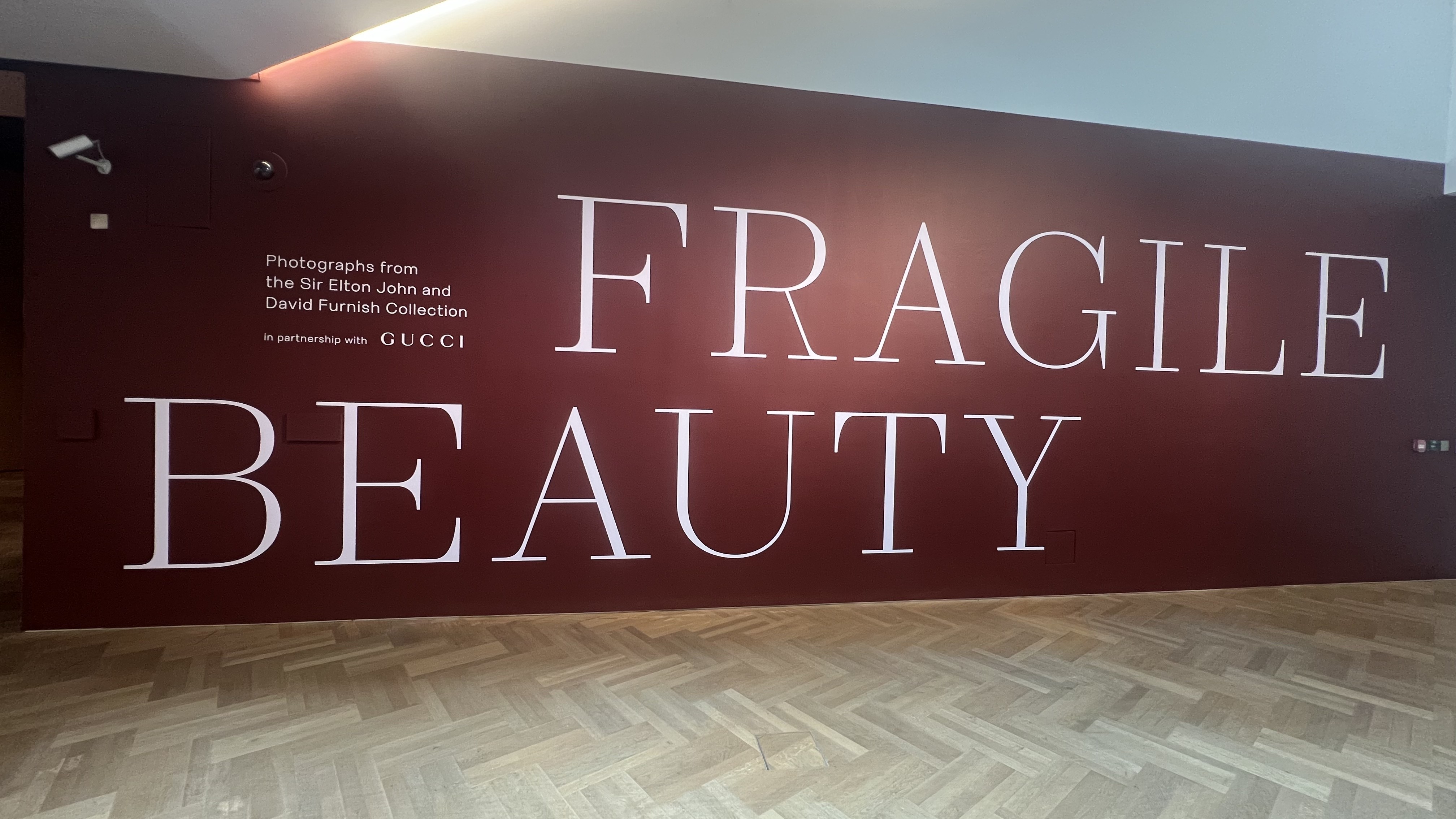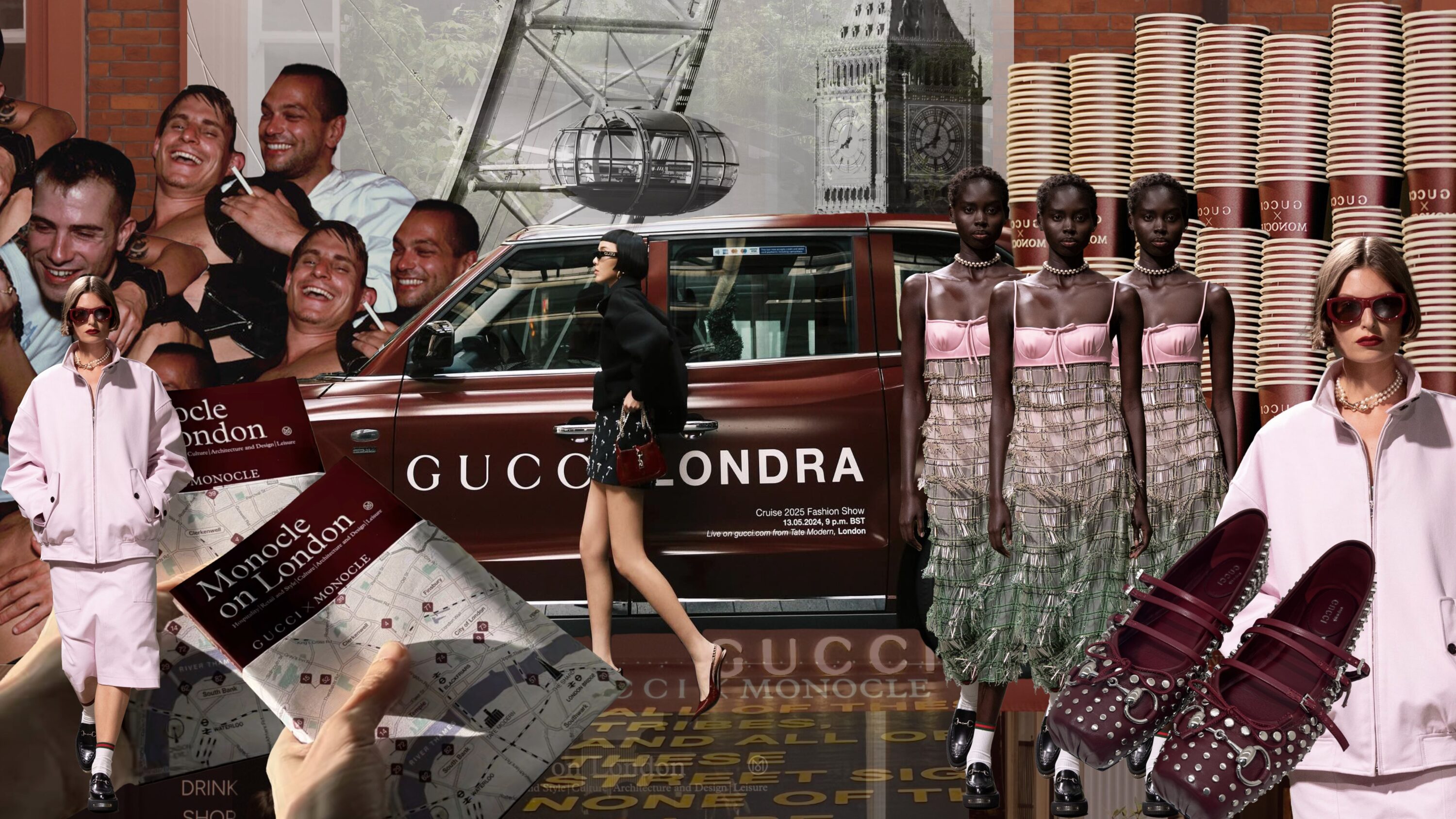How Gucci has Made London into a Second Home which holds the Secret to Its Heritage
As a sister city, none are more synonymous with the Gucci brand than London, so it was in the British capital that creative director Sabato De Sarno decided to present his first Cruise collection for the house. Coming only a year after Gucci landed in the city for its Gucci Cosmos exhibition and following the revamp of its Bond Street store.
Not content with simply hosting a show and star-filled after-party, there was a considered approach to the way in which the brand rolled out an immersive takeover across the city – from the east end to the heart of Marylebone – as reflections of Gucci’s new era were evident everywhere. It also helped that with the introduction (by De Sarno in 2023) of a new signature colour in the form of the Gucci “Rosso Ancora Red” the takeover of billboards, buildings, cafés, and London’s black taxi cabs, meant the arrival of the Italian luxury brand was visible for miles around.

“We choose London for the Cruise show, knowing that was the right choice. I owe a lot to this city, it has welcomed and listened to me. The same is true for Gucci, whose founder was inspired by his experience there. The House’s return is driven by a desire to be immersed in its distinctive essence, its creative driving force with its limitless capability to put together contrasts, make them converse, and find ways to coexist.”
Sabato De Sarno, Creative Director, Gucci
The location for the show was one of the city’s most iconic art galleries – the Tate Modern on the Southbank – with its cavernous Turbine Hall, concrete interior and infamous ‘Tanks’ which were transformed through a set design which encompassed living foliage, earth, and plants from floor to ceiling, which were to be donated to community projects around London post-show. The vision was to “embrace duality” according to the show notes, bringing the outside in and playing man off against nature, “demonstrating [the] two sides of life” which was a narrative thread that could be seen throughout the collection.



Gucci’s Cultural Collaboration Brings the City’s Hidden Hotspots to Life
Shortly before the shows debut the narrative around Gucci’s connection with the city was already building. As brands know only to well, anticipation is a major part of the journey leading up to a show, and if you can provide a deep-dive into your heritage in the run-up, well that’s always a bonus. And so it was at the beginning of May that Gucci got the conversation going with the launch of a social media campaign on Instagram and TikTok starring its Savoy Duffle.
Sharing the story of the popular travel companion for the well-heeled (to drive home the point the Gucci Valigeria marketing campaign featured Kendall Jenner and Bad Bunny transiting through an airport) there was an invitation to “travel into the unknown” and, for those who didn’t know, explore The Savoy hotel’s connection with the house in the fact that it’s founder Guccio Gucci sowed the seeds for his luxury house by working as a porter at the hotel, aged 16, in 1897.
The original London ‘It Girl’ Kate Moss and rapper, singer, and actor Little Simz also starred as part of the brands pre-show campaign films, traversing the city in their Gucci finest and stopping in at the The Savoy and the show venue, while ensuring that the citys key landmarks and symbols were captured to communicate London’s unique energy.
Understanding the need to build out a brand universe which exists outside of pure product, Gucci also leaned into its heritage of travel with a collaboration with the go-to arbiters of global culture and current affairs, Monocle. Partnering with the media brand on a guide to London, the innovative angle which the guide took was to focus on the reputation of London as a city of contrasts – aligning with Sabato De Sarnos vision for his Cruise 2025 collection:
After having expressed my ideas of desirability and sensuality, this is another piece of me, more romantic, more contradictory. I like taking something that we think we know and breaking away from its rules, taking it as far as it can go, without ever distorting it. Bringing it towards its opposite and finding harmony.”
Sabato De Sarno, Creative Director, Gucci
Taking over Monocle’s café on Chiltern street fans could secure a copy of the guide (which was also gifted to show guests), as well as a co-branded coffee before using the custom map of the city to visit their brand art wall in the Truman Brewery Market before heading to the shows location to watch the show and be part of the #GucciLondra experience.




Sabato De Sarno Doubles Down and Shows There is Strength in Duality
For his fourth collection as creative director – and his first Cruise show – De Sarno’s time spent in the city where it all started was evident in the introduction and enmeshing of new ideas, which were also a continuation of the new Gucci girl who is slowly coming into her own. Journeying around London, De Sarno’s insights (which were included in the guide) reveal how the ideas within the show came together, saying:
I’ve looked around the city and tried to capture its contrasts…I wanted to immerse myself in the culture clash that is so characteristic of the city, observing it through photography, art and music but also in reality”
Sabato De Sarno, Creative Director, Gucci
And a collection of contrasts – which gave us another window into this new chapter – is what we got, as the carefree Gucci woman of the 1970s held space with rebellious Teddy Girls, Chelsea Girls, English Roses and 1960s beatniks, by way of the bohemian ethereality which closed the show. There was also a healthy dose of flora in the form of chamomile (or daisy) flowers as feminine ditsy prints or more structured jacquards.
The collection was a melting pot of Londons past, present, and future mixed in with classic Italian sensibility. And as is practice with pre-collections, these were pieces which were instantly wearable, while adding in a healthy dose of decadent design development.






Going behind-the-scenes at the brands post-show collection viewing (commonly known as the re-see) there was a sense that the future of Gucci is in safe hands. Despite any ongoing criticism, it would seem that De Sarno is cognitively aware of the difficult times we are living through and is offering clothing to inspire a new mood of appreciation for the everyday. Without setting aside the need for escapism, contrasting (as he put it) foundation pieces with a broad stroke of fun and frivolity.
Taking in the collection up-close the ‘art of embroidery’ and embellishment meant each piece was more than what met the eye on first look. The collars of boxy utility jackets that first appeared as if corduroy were in fact suede, oversized cotton shirts featured cut-outs at the armhole, and denim jeans – which are poised to become collectors’ items – carried the creative directors early signature detail of fringed beading, but rather than sweeping the floor, here it was cleverly cut-off at the knee creating an unexpected staggered effect.
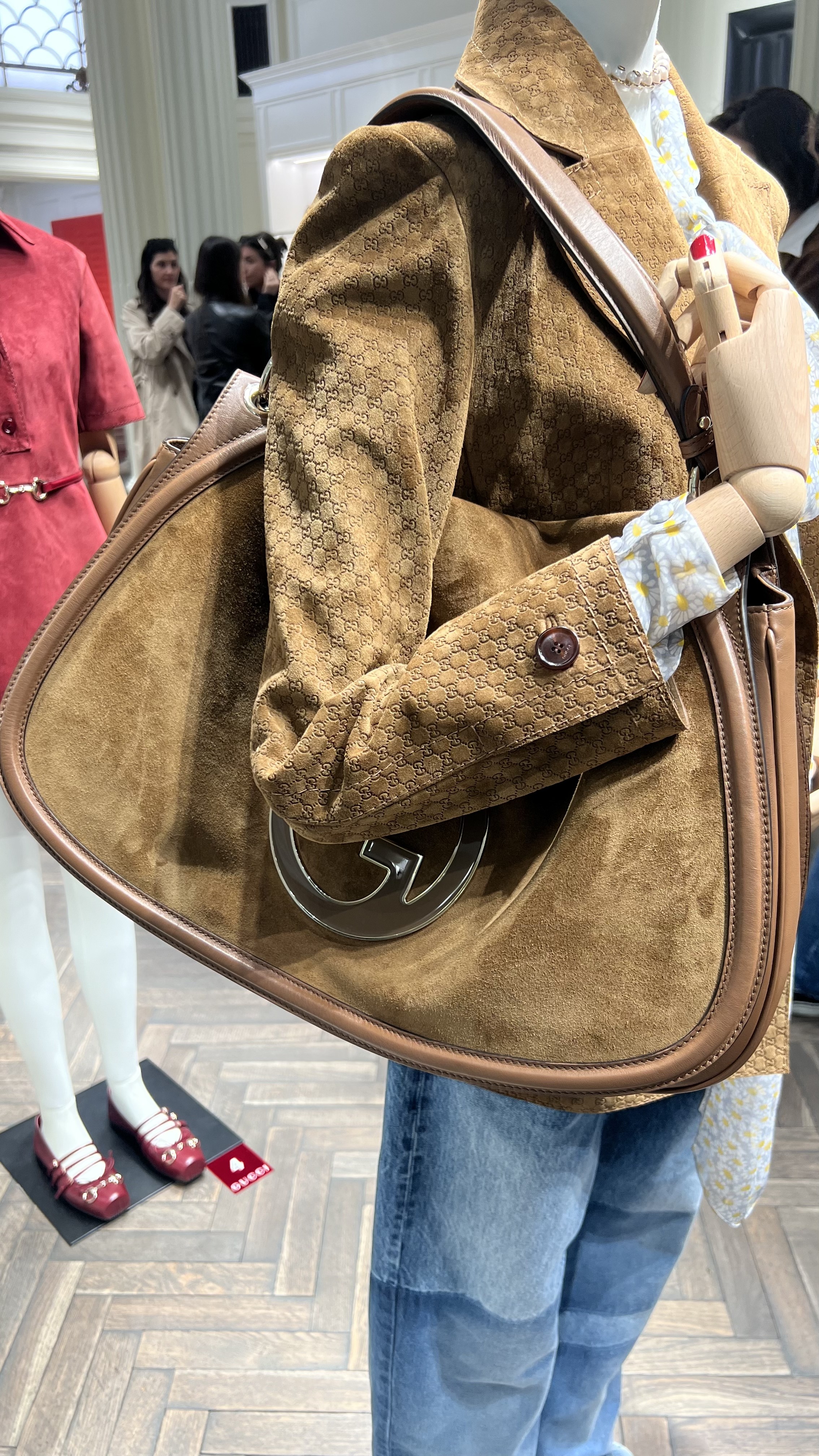










I’m interested in people whose ideas embody this idea of clashing. Human beings are not machines. Their styles and personalities aren’t linear. I’m drawn to enigmatic characters; in them, contradiction becomes synonymous with strength.”
Sabato De Sarno, Creative Director, Gucci
The finale section of eveningwear was a nod to that contradiction, with the ethereal looks playing into the return of the boho chic aesthetic. They are certain to grace the red-carpet, fresh off the runway, as the Cannes Film Festival gets underway this week.
A continuation of the grounding realism being applied to the brand also saw a selection of elevated ballet flats being worn by the majority of models as the footwear of choice. Evoking “Gucci’s romantic side” and shifting focus from the classic loafer and creeper-hybrid to a style that links the brands heritage (the double ring and bar hardware features front-and-centre) to how women want to dress now, with ease.
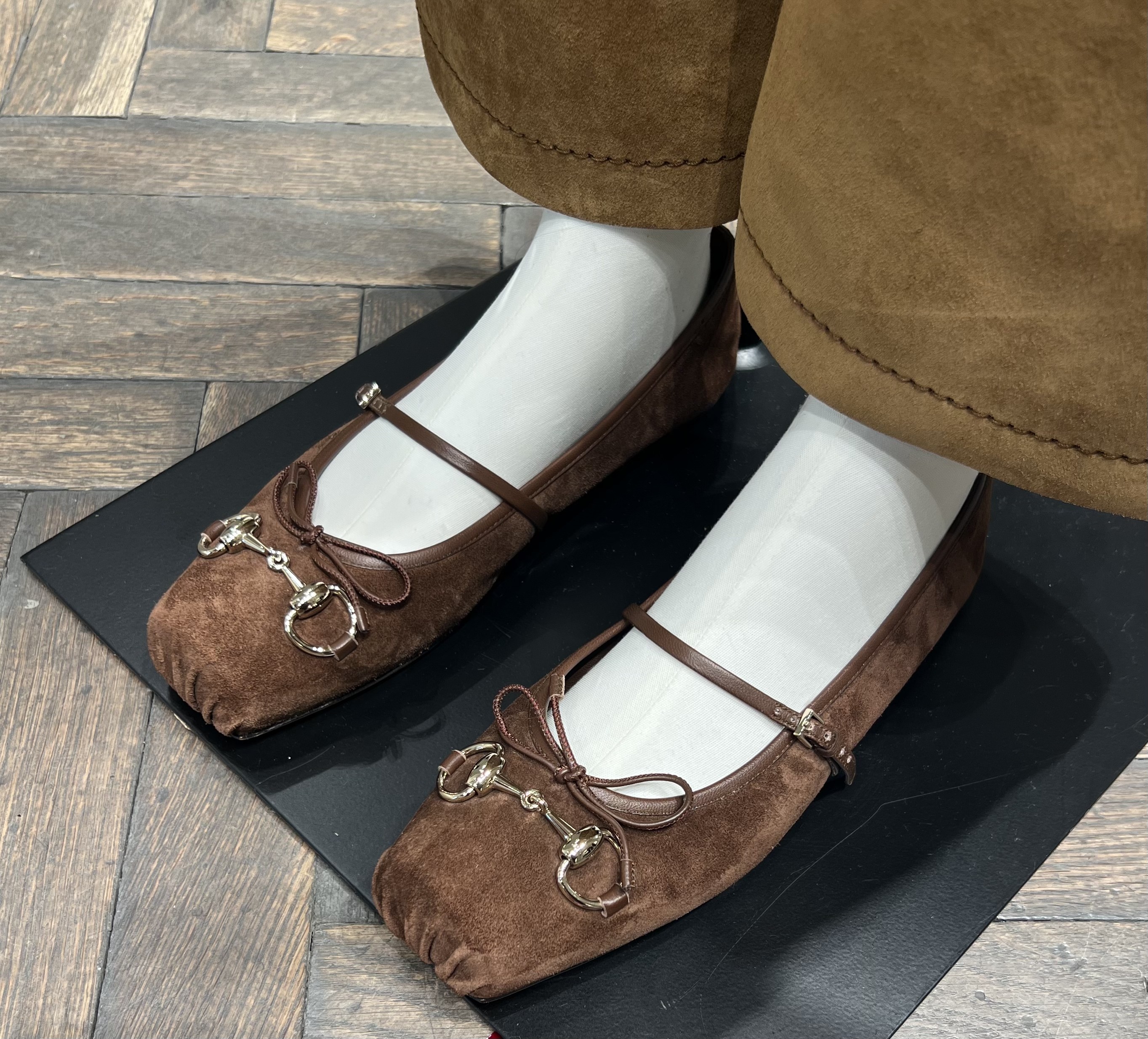

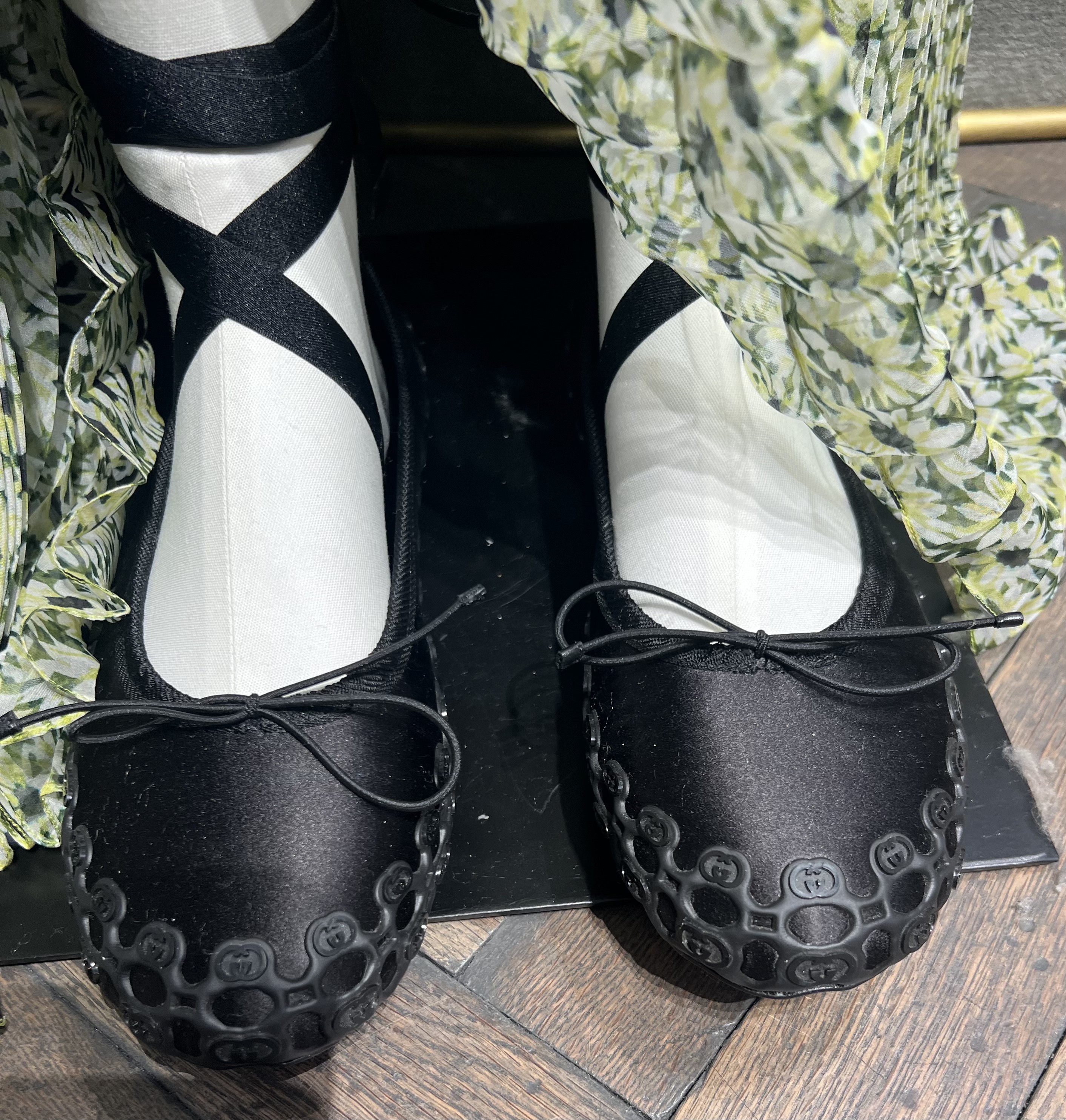
Satisfying the Demand for Runway-to-Reality, Gucci Dabbles in the See Now, Buy Now Model
Many brands have dabbled in the world of see-now, buy-now and for Cruise a new bag which featured the “rounded iteration of the archival interlocking G” aptly called the Gucci Blondie and developed in the early 1970s was introduced. It was a coup for the brand to get the original ‘Blondie’ Debbie Harry sitting front row (and wearing the bag) and witnessing the revival of her namesake bag, where she had the option to choose from maxi-sized monogrammed canvas or suede, and a simple cross-body.
Drumming up the desire to be the first to own these bags, the brand is tapping into the SNBN model and making a limited number available in the week following the show. A smart strategy as anticipation for the next drop will surely build once the window closes.
Opportunity Knocks: Gucci Opens its (Show) Doors to the Next Generation of Design Talent
It is not uncommon for throngs of fans and industry enthusiasts to descend on show venues across the big four, but when a Cruise show comes to town there is often an increased opportunity for hype to build – being the only show in town – and the chance to involve the next generation in a 360° experience of the show. And this season, Gucci chose to partner with 1Granary to host a private screening for a select number of students from Central Saint Martins. Following which they were also granted access to the after-party, which filled the Tate Modern’s Turbine Hall with a ‘Who’s Who’ of London’s tastemakers, models, artists, actors, performance artists and brand ambassadors who met to dance the night away to Mark Ronson and Kaytranada.
Fragile Beauty Exhibition: Leaving a Post-Show Brand Legacy
The final part of the brands city immersion was the sponsoring of the Fragile Beauty exhibition at the Victoria and Albert Museum. As one of the museums longstanding collaborative partners Gucci has a shared commitment with the institution in “preserving and celebrating the arts, in all its forms” with this seasons exhibition rooms being punctuated by Gucci’s new “Rosso Ancora Red”.
The curated selection of the expansive photography collection of Sir Elton John and David Furnish stretches back to the 1950s through to today and spans the genre-defining work of Richard Avedon, Juergen Teller, Herb Ritts, Nan Goldin and Robert Mapplethorpe, with themes that reflect the cultural moments which became obsessions for John and Furnish, from the Civil Rights Movement – then and now – to the ongoing fight for LGBTQIA+ equality, as well as the representation of queer communities and the male form through strength and vulnerability, in a way that is both provocative and compassionate.



